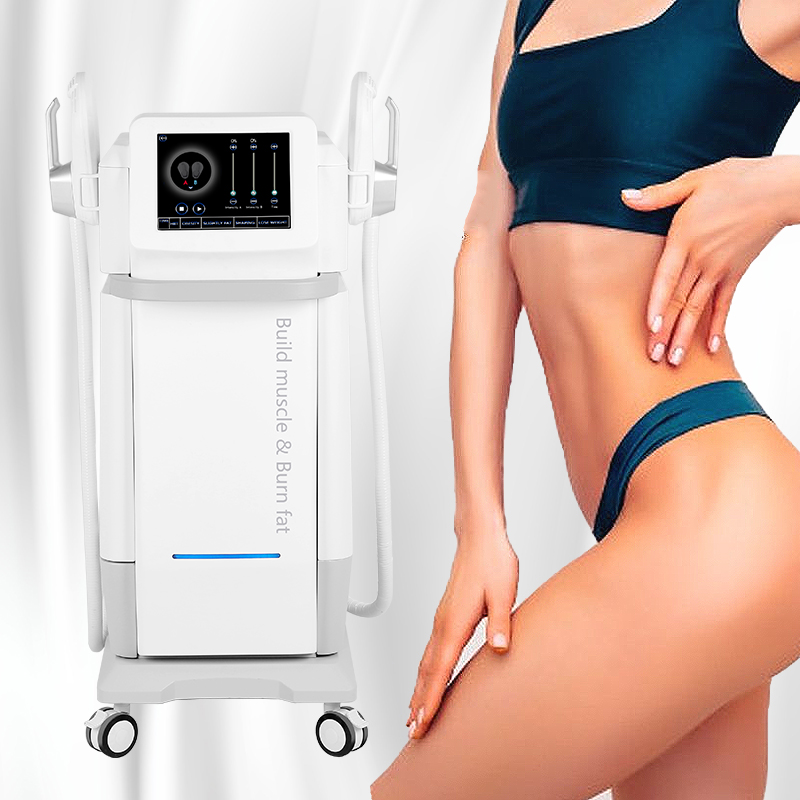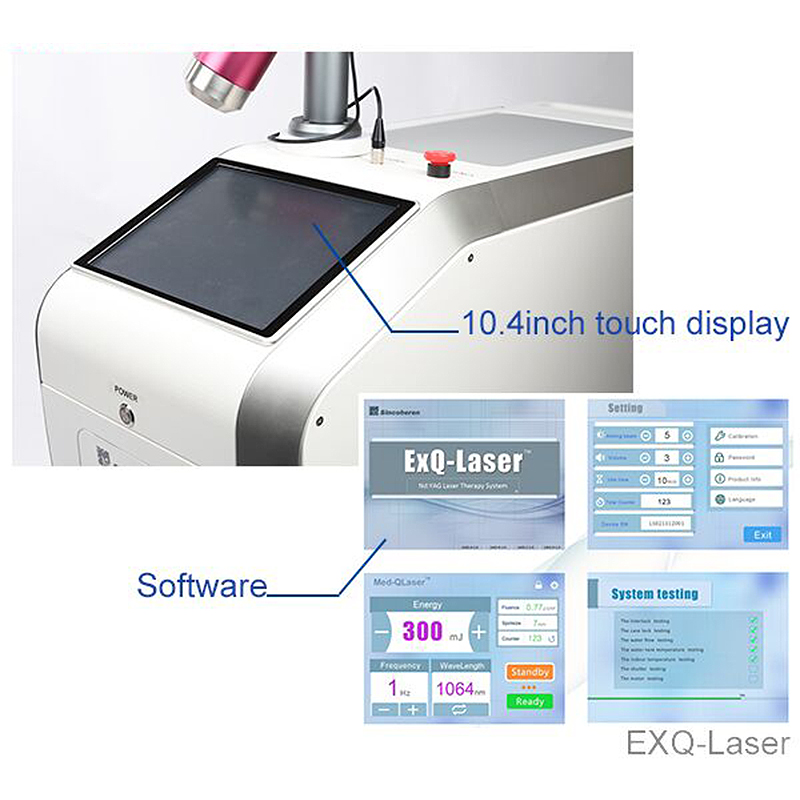Ultrasonic cavitation, or ultrasound cavitation, is a cosmetic procedure that’s used to break apart fat deposits in your body. The treatment claims to work as an effective, less invasive alternative to liposuction.
There are very few risks associated with this procedure, but that doesn’t mean that there are no side effects. Oxygen Skin Treatment Machine

Bruising and pain are common short-term side effects, and some people have loose skin or dimples and waves in their skin after healing from this treatment.
Ultrasonic cavitation is advertised as being extremely convenient because recovery is minimal and side effects are rare.
The most time-consuming part of the process might be finding and consulting with a licensed, trained provider who has experience doing the treatment.
Ultrasonic cavitation is generally far less expensive than traditional liposuction. Costs vary according to the area you’re getting treated and whether you need repeated treatment sessions, but the average is around $250–$350 per treatment.
This treatment varies in effectiveness, and more clinical trials are needed to have a clear understanding of how well it works.
We do have some data from studies that support ultrasonic cavitation as a less invasive alternative to surgical liposuction.
Ultrasonic cavitation, also called ultrasonic lipolysis, is a body contouring treatment that is used to remove fat deposits under your skin. It can also be referred to by brand names, such as Liponix or Ultrashape.
This procedure is a safer alternative to surgical options, like liposuction. The treatment uses ultrasonic radio waves to break apart fat cells, which are then absorbed into your body by your lymphatic system.
Ultrasonic cavitation is different than other similar treatments, like ultrasound liposuction, because it doesn’t require any incisions. This means recovery is easier. It also means that results might be less noticeable.
The ideal candidate for ultrasonic cavitation:
Ultrasonic cavitation is meant to target small areas of fat and help contour your body. It isn’t a treatment for people who are trying to lose a lot of weight.
The verdict is still out on how well ultrasound cavitation works. There’s promising evidence to suggest that this is an effective body contouring treatment.
If you’re considering this treatment for yourself, keep reading to find out everything you need to know about the costs, side effects, procedure, recovery time, and more.
Ultrasonic cavitation is considered an elective cosmetic procedure. That means that you’ll have to pay for the treatment, as well as any associated costs, completely out of pocket. Insurance doesn’t typically cover body contouring, which includes ultrasound cavitation.
The average cost can vary widely and depends on:
The average cost of nonsurgical fat removal treatment is $1,300.
There aren’t a lot of additional costs for this treatment besides your provider’s fee. No anesthesia is typically necessary.
Ultrasonic cavitation appeals to many people partly because recovery time is minimal.
This treatment is advertised as a “lunch break procedure,” meaning that your appointment can usually be completed in less than an hour. You can drive immediately afterward, and you can even return directly to work after having it done.
Ultrasonic cavitation relies on ultrasound technology to break apart fat cells.
Ultrasound waves are sent deep into the layers of your skin, causing a disruptive vibration. Fat cells then break apart from each other and are dislodged from your dermal layers.
After a few days, the fat cells are absorbed by your lymphatic system and drained as waste from your body.
It’s difficult to tell how effective this treatment is, but recent research is promising.
A small 2019 study tested the effectiveness of ultrasonic cavitation for 50 women who were considered medically overweight.
Half of the women simply followed a low-calorie diet, while the other half had the low-calorie diet with radiofrequency and ultrasound body contouring procedures.
After 5 weeks, the women who had been given ultrasonic cavitation showed a reduction in body fat mass. Interestingly, they didn’t lose more weight than the other group — they simply lost body fat.
Another small study done much earlier in 2007 followed 30 individuals who were all given ultrasonic cavitation body contouring treatment.
Participants all saw a reduction in body fat mass after three treatments. The treated body fat area was reduced in size by one to three centimeters at the conclusion of the study.
This study also showed that study participants didn’t lose weight – they just lost fat.
The procedure for ultrasonic cavitation is pretty straightforward.
On the day of your appointment, your doctor may ask you to undress in private and put on a paper gown, depending on the area of your body that you’re treating.
Your doctor may sterilize the area of your treatment using alcohol. Using a handheld ultrasound device, they’ll slowly go over the target area of your body.
You may feel a warm sensation during the procedure and hear a buzzing from the ultrasound machine. Treatments typically take between 40 minutes to an hour.
Some studies suggest that this treatment is most effective at reducing fat in “fibrotic” places in your body, which include the back and chest area.
Ultrasonic cavitation is also frequently performed on the:
Ultrasonic cavitation is considered a low-risk treatment for most people. Common side effects include:
In some cases, the skin won’t absorb the fat evenly after it breaks down. Lumps, bumps, and valleys on your skin can appear after ultrasonic cavitation treatment.
These skin irregularities may be resolved by followup treatments.
After ultrasonic cavitation, you should be able to stand up and drive yourself home.
Pain and bruising are usually minimal. You’ll be instructed to hydrate as much as possible after the procedure to help your body flush the fatty cells through your lymphatic system.
But don’t expect to see results right away. Right after your appointment, your body might feel puffy or swollen. It takes time for your body to break down and dissolve the fat cells that have been dislodged.
You may also require repeated treatments to see visible results. Most candidates for this treatment see their final result within 6 to 12 weeks. On average, treatment requires 1 to 3 visits for visible results.
Results of this treatment are permanent, as long as you maintain a healthy diet and exercise. If you have a sedentary lifestyle, fat deposits may return to areas that have been treated.
To prepare for your appointment, your provider will give you detailed instructions, which you should follow carefully.
Make sure that you disclose the following to your provider before your appointment:
Avoid drinking alcohol for at least 48 hours before your appointment.
You may also be advised to avoid nonsteroidal anti-inflammatory drugs (NSAIDs), such as ibuprofen, in the 2 weeks leading up to your procedure.
Drink plenty of water before and after your treatment so that your body can flush out fat deposits quickly.
Ultrasonic cavitation is a form of noninvasive body contouring, as is the CoolSculpting treatment.
Both of these treatments have the same goal in mind: reducing fat and creating a slimmer silhouette.
Neither treatment is a weight loss treatment, and both procedures are safer and less invasive than liposuction.
Ultrasonic cavitation gets rid of fat cells by using ultrasound frequencies, while CoolSculpting works with your body’s natural response to cold temperatures to get rid of fat.
CoolSculpting treatment is generally more expensive than ultrasonic cavitation, and the time you spend in the doctor’s office getting the treatment is longer.
There are ultrasonic cavitation devices that you can purchase for home use. These devices aren’t cheap, but they’re typically more affordable than in-office treatments.
The effectiveness of these devices varies. A device that can disburse 4.4–7.5 megahertz (MHz) of ultrasound for a period of 20–50 minutes at a time may be comparable to a skin tightening treatment you would get in a clinical setting.
Ultimately, it’s probably safe to try these products, but you may be wasting your money.
A good provider will offer a consultation where they’ll discuss your treatment options and provide a portfolio of their work for you to look through.
Choosing a licensed, trained provider with experience in ultrasonic cavitation will make a significant difference in the way that your results look.
It’s also important for your safety to choose a provider who’s been certified in ultrasonic cavitation. You can begin your search for a certified provider using the American Society of Plastic Surgeon’s search tool.
Last medically reviewed on July 31, 2020
Liposculpture is a surgical procedure that is used to give you more muscle tone. Unlike liposuction it’s meant for smaller areas and details. Our…
Lipolysis is a type of cosmetic surgery. It uses laser energy to change the shape and appearance of your body. Here's what to expect.
Laser liposuction and CoolSculpting are both used for sculpting away stubborn areas of unwanted fat. But how do they compare? We break it down for you.
Tumescent liposuction may be preferable if you’re looking to remove fat cells in a smaller treatment area. Learn how it compares with standard…
Knee liposuction is a surgical procedure that removes fat deposits from the inner knee. The procedure is often done in conjunction with liposuction in…
Liposuction carries the risk of scars because the surgeon makes an incision during the procedure. However, this is not a common side effect.
Tickle Lipo is a minimally invasive procedure that removes excess fat deposits using infrasonic technology. Unlike conventional liposuction, it’s done…

Oxygen Therapy Equipment The biggest risk factors for developing diabetic retinopathy include blood sugar levels and age, as well as genetic risk.